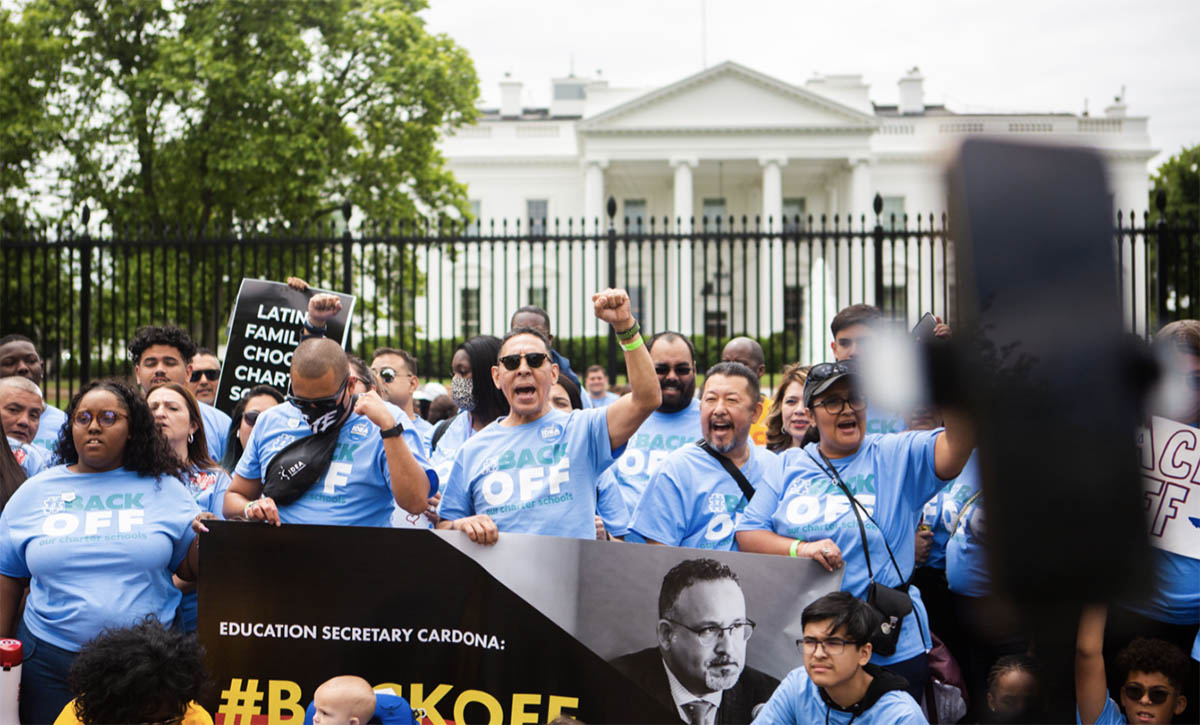After Overhauling Program, Ed Dept. Opens One-Month Dash for Charter Funds
Advocates call the new regs “workable,” but still have concerns about diversity

Get stories like this delivered straight to your inbox. Sign up for The 74 Newsletter
States and charter operators have just a month to scramble for grants under a vastly revamped federal program in which, for the first time, they’ll have to justify the need for new charter schools.
The U.S. Department of Education on Wednesday posted two notices for grants under the Charter Schools Program — one for states and another for those developing charter schools. The announcements reflect new rules meant to create more racially diverse schools and increase transparency when for-profit companies are involved in running them. The deadline is Aug. 5, giving states far less than the four months they’ve had to apply in previous years.
The regulations represent a compromise between the Biden administration, which wanted to limit competition between a growing charter sector and traditional schools, and advocates who argued that such schools play an important role in meeting students’ needs after the pandemic.
Karega Rausch, president and CEO of the National Association of Charter School Authorizers, described the new rules as “workable,” but said he remains concerned about a requirement that new charters be racially and socioeconomically diverse — or explain why they’re not. The rule says operators must note how their charter school won’t “hamper, delay or negatively affect any desegregation efforts in the local community.”
The provision “places additional unnecessary and unwarranted burdens on schools proposing to serve large proportions of lower-income students and students of color,” Rausch said. “And there is no clarity on what constitutes a valid desegregation effort and how applicants will know if any effort exists.”
In March, the department posted a draft of the rule for the $440 million program, which provides start-up and expansion funding for charters. It sparked immediate backlash from the charter school community, with advocates arguing that it would squash growth, especially among smaller, independent operators unaffiliated with charter management organizations. Three Democrats in the Senate and a bipartisan group of mayors later joined opposition to the new rule, and charter supporters protested outside the U.S. Department of Education and the White House May 11, telling the Biden administration to “back off.” Department officials say the rule is meant to increase accountability, prevent charters from closing because of insufficient demand and promote integrated schools.
“We are at our strongest as a nation when we embrace the rich diversity across our country,” Anna Hinton, director of the program at the department, wrote in a Friday blog post about the final version. “Federal resources should not be used to increase racial or socioeconomic segregation and isolation.”
Work from the Century Foundation contributed to the department’s revision. In 2019, the progressive think tank recommended ways the program could increase diversity. While many urban charter schools predominantly serve Black or Hispanic students, others in suburban communities draw mostly white students, data shows.
Stefan Lallinger, a senior fellow at the organization, said not all charters “take proactive steps” to attract a diverse student body.
“In some instances, particularly in what are known as ‘white flight academies,’ some charter schools actually exacerbate segregation in a given region,” he said, adding that while the new rules won’t prevent “hypersegregated” schools, they “represent real progress, and signal a growing recognition among education leaders that they should be part of the solution.”
In her blog post, Hinton said the department recognizes that some charters exist in racially isolated communities and that such schools won’t be “at a competitive disadvantage for funding.”
Carol Burris, executive director of the Network for Public Education, which is critical of charter schools, was the most outspoken in support of changes to the program.
“Unscrupulous individuals who used the program for their enrichment will find it more difficult to do so,” she wrote Monday in The Washington Post, highlighting requirements that charters disclose any contracts with for-profit entities and hold public hearings on proposed schools or expansions.
But in a win for the charter sector, officials won’t force charters to collaborate with district schools in order to receive funding — a requirement included in the original draft — but they still want to encourage partnerships. And they clarified that applicants can demonstrate demand for their programs in multiple ways, including waitlists.
“The fact that they have taken some of our comments seriously indicates the power of advocacy,” said Nina Rees, CEO of the National Alliance for Public Charter Schools. But she added that if the added documentation required and the small window to apply “dampens interest” in seeking the funds, that would be “victory for our opponents.”
Yomika Bennett, executive director of the New York Charter Schools Association, was among those who rallied in Washington in May.
“As far as I’m concerned, we’re not fully heard until the broken education system is fixed,” she said. “School systems in cities across [New York state] and across the country are allowed to fail to educate students year after year, generation after generation. Officials, union bosses and critics attack charters, school choice and fight to keep students trapped in failing district schools.”
Get stories like these delivered straight to your inbox. Sign up for The 74 Newsletter

;)
